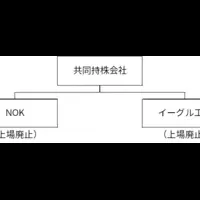
Strengthening Vendor Security Assessments in Today's Risky Landscape
Strengthening Vendor Security Assessments in Today's Risky Landscape
Vendor partnerships are essential for businesses, yet they bring with them a unique set of challenges concerning security. As the landscape of cybersecurity threats evolves and regulatory requirements become more stringent, organizations find themselves at a crossroads. Traditional methods of assessing vendor security have started to show their limitations, and a recent report from the Info-Tech Research Group shines light on this important issue.
The Growing Importance of Vendor Security
In the age of digital transformation, organizations increasingly collaborate with various vendors and third-party service providers. Unfortunately, this dependence can expose companies to substantial security risks. The rise in cyberattacks targeting third-party vendors has escalated the need for more rigorous security assessments. The conventional one-size-fits-all approach to vendor assessments is outdated, according to Info-Tech Research Group, resulting in complex, often frustrating processes that can hinder progress and leave companies vulnerable.
Ahmad Jowhar, a research analyst at Info-Tech Research Group, emphasizes that many assessments are too cumbersome and can lead vendors to drop out of bidding processes. This reality poses a serious risk to organizations who may unwittingly expose themselves to potential threats by bypassing essential security checks in pursuit of project efficiency.
Info-Tech's Blueprint for Improvement
To better equip organizations in managing these risks, Info-Tech Research Group has unveiled its latest resource titled "Build a Vendor Security Assessment Service." This comprehensive guide provides a step-by-step process promoting a risk-based approach to vendor evaluations. The coherence of this framework allows IT leaders to concentrate on the aspects that matter most, streamlining efforts to safeguard sensitive data and improve compliance.
A Three-Phase Strategy
The blueprint outlines a clear three-phase strategy that consists of:
1. Define Governance and Process: Establish a framework that identifies requirements, delineates responsibilities, develops policies, and outlines risk treatment strategies consistent with the organization's risk appetite.
2. Develop Assessment Methodology: Design tools tailored for evaluating service and vendor risks. The objective is to create risk-based questionnaires that circumvent common pitfalls of traditional assessments, such as being excessively broad, overly burdensome, or too lengthy.
3. Implement and Monitor Process: Execute the evaluation framework with an emphasis on iterative improvement. This involves continually refining security conditions in vendor contracts and conducting periodic reassessments to ensure that established standards are being met.
Assessing Vendor and Service Risks
Integral to the success of the framework is a robust methodology for evaluating vendor risks. Organizations can calculate potential impacts of vendor-related incidents by weighing the assets at risk and anticipated recovery costs. Furthermore, they assess the likelihood of incidents and compute a composite risk score, which helps in categorizing risks in a register or an inventory.
Implementing this structured framework not only encourages vendors' accountability but also distinctively positions organizations to manage evolving threats effectively. Regular reassessments bolster vendor accountability and support better decision-making, ultimately minimizing exposure to risk while improving operational efficiency.
The Future of Vendor Assessments
Info-Tech Research Group's findings highlight the pressing need for organizations to rethink their approach to vendor security assessments. By fostering continuous improvements and emphasizing a structured process, companies can transform their vendor risk programs into strategic accelerators for business growth instead of operational bottlenecks.
As we navigate an era marked by rapid technological advancement and heightened scrutiny over data protection, the need for robust vendor security assessments cannot be overstated. For those interested in further insights from Ahmad Jowhar and the complete blueprint, Info-Tech makes it readily available for organizations striving to bolster their security posture against a backdrop of rising risks.
In conclusion, the security landscape is continually shifting, and adopting a proactive, risk-adjusted framework as outlined by Info-Tech Research Group will enable organizations to keep pace with emerging threats and thus support their overall business success.
Topics Business Technology)










【About Using Articles】
You can freely use the title and article content by linking to the page where the article is posted.
※ Images cannot be used.
【About Links】
Links are free to use.